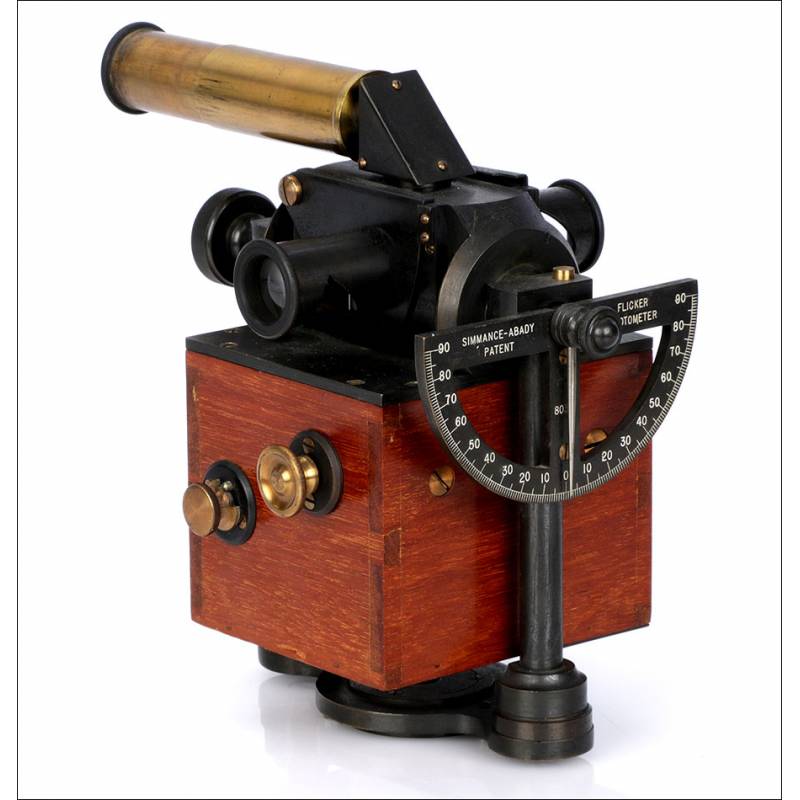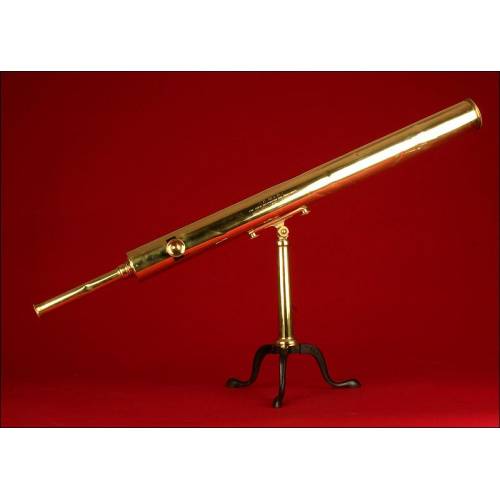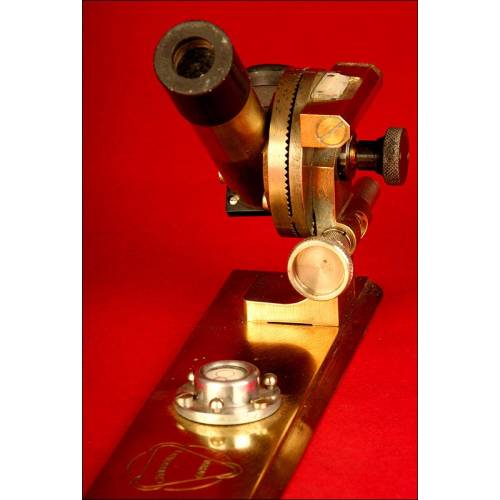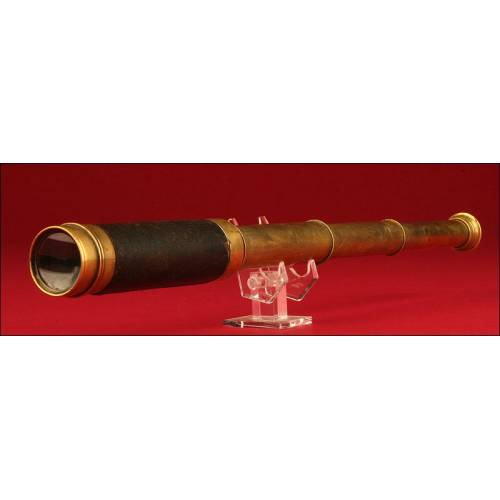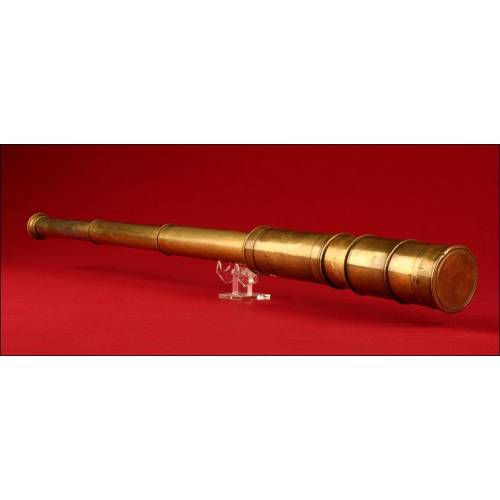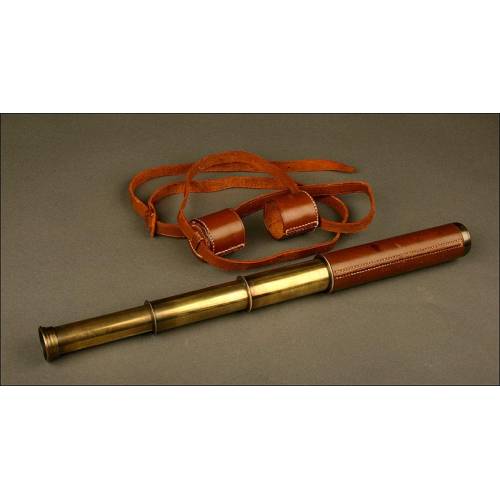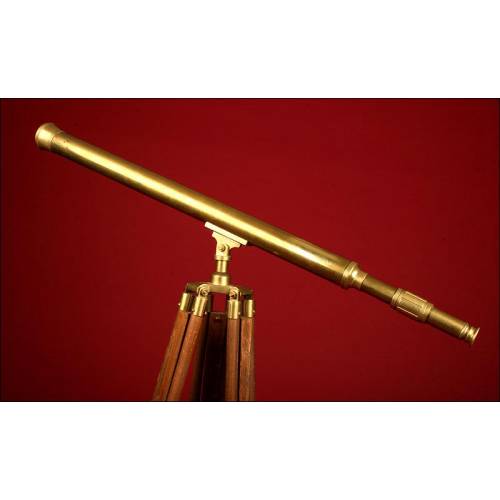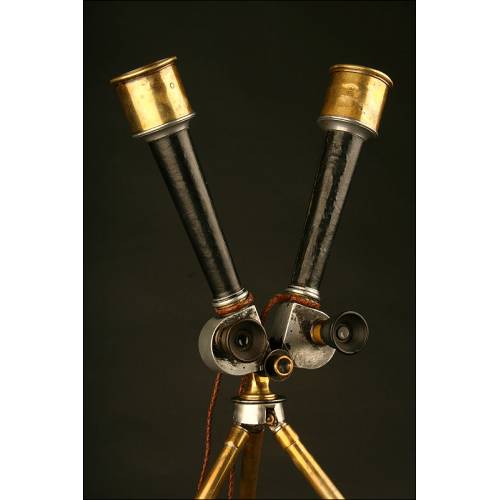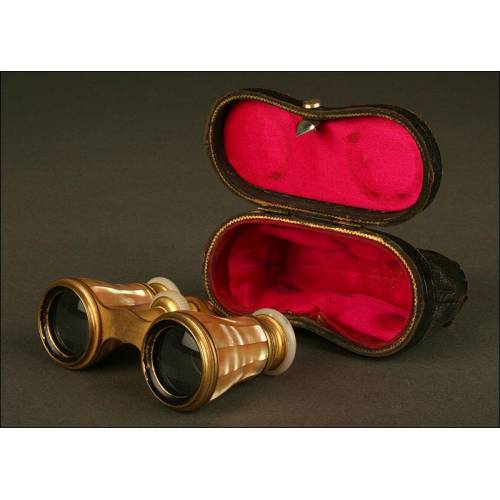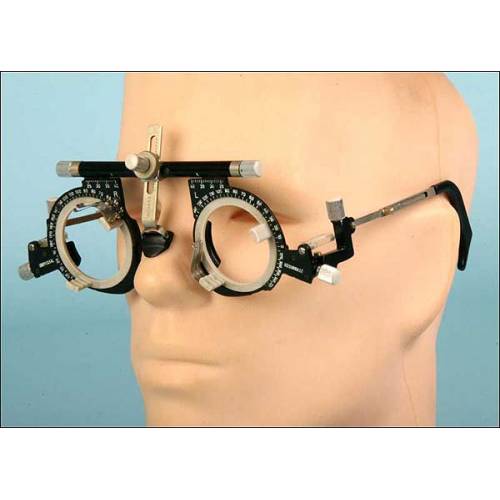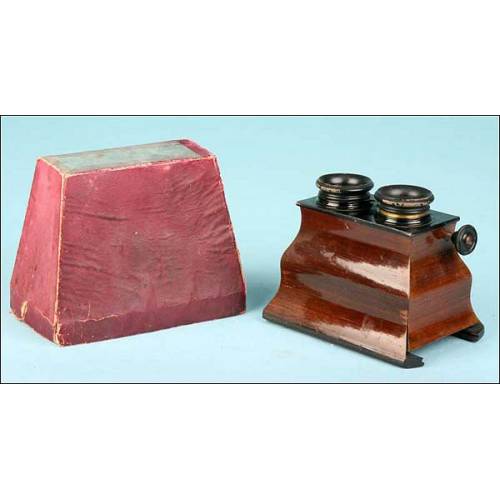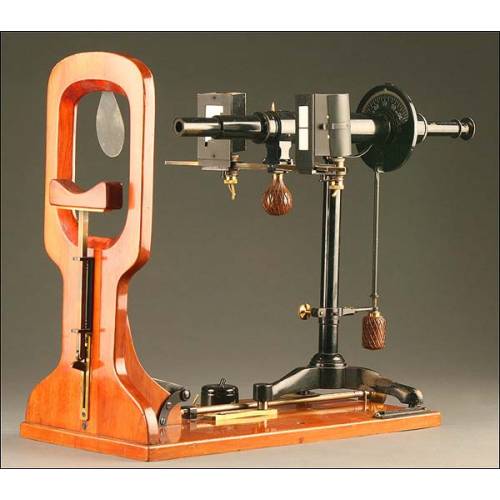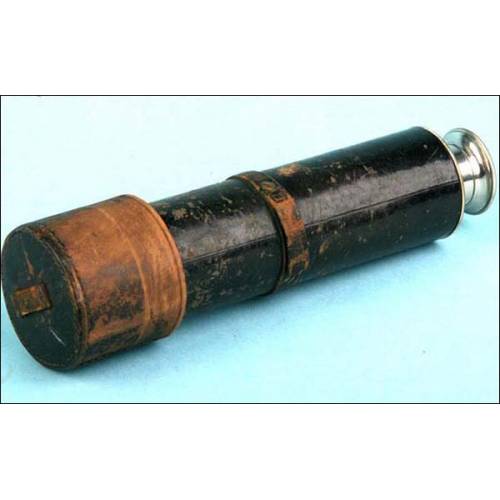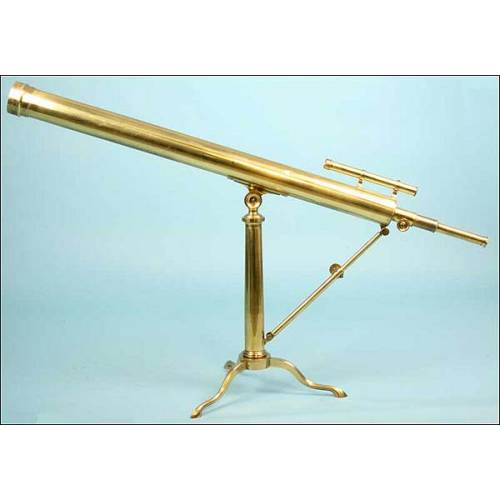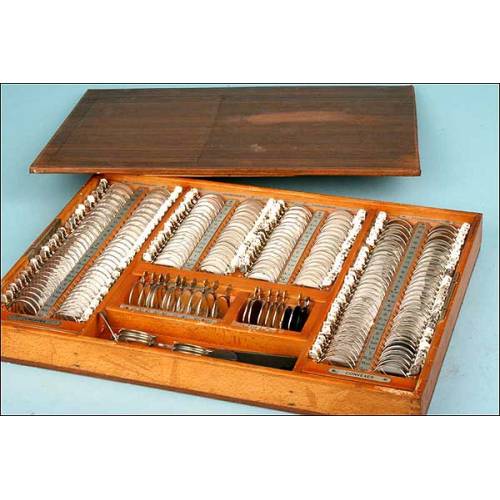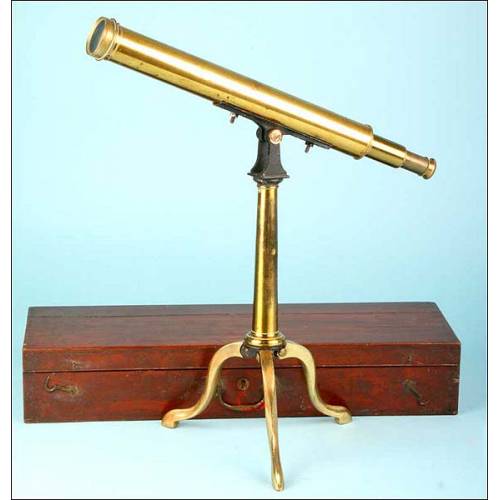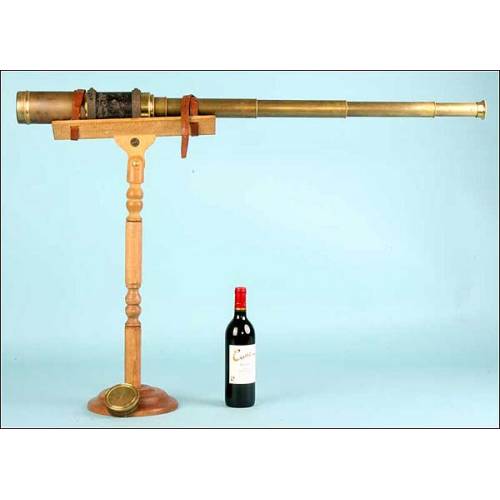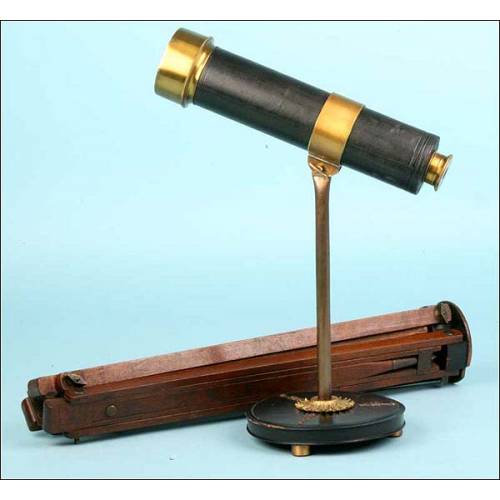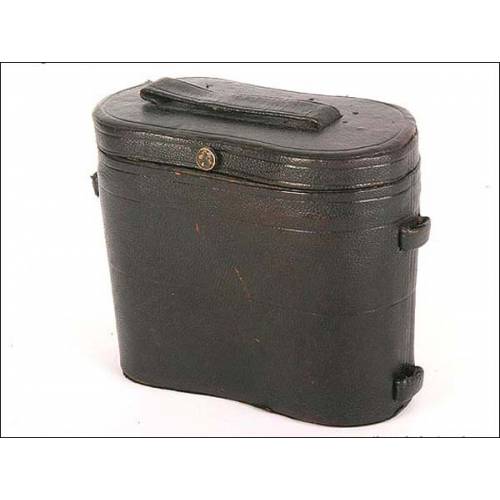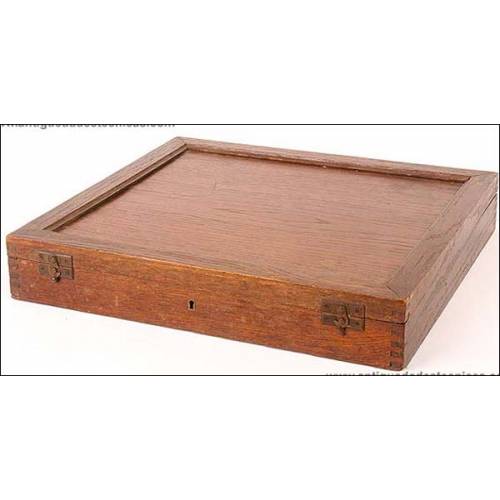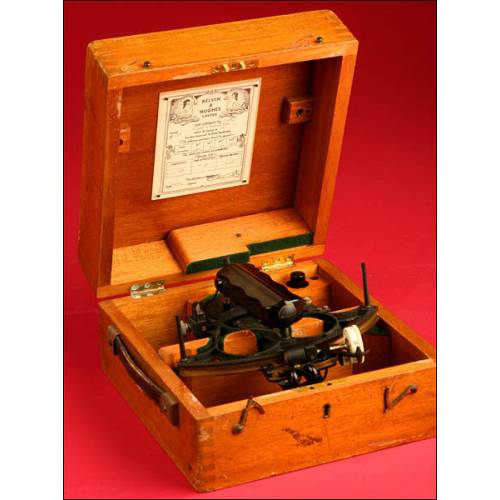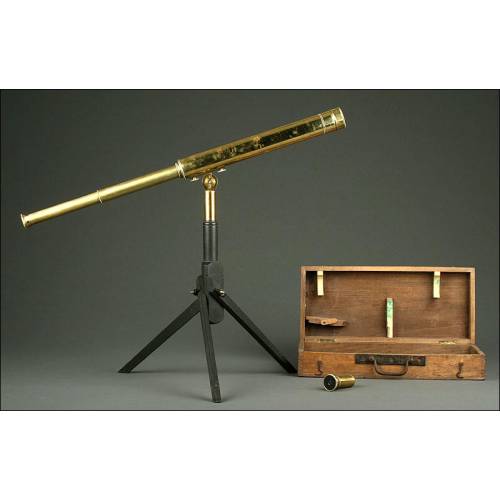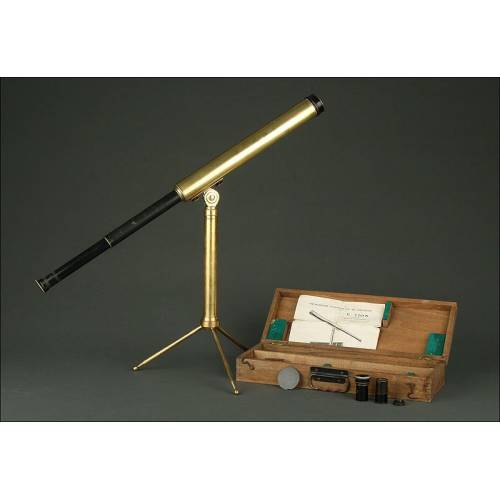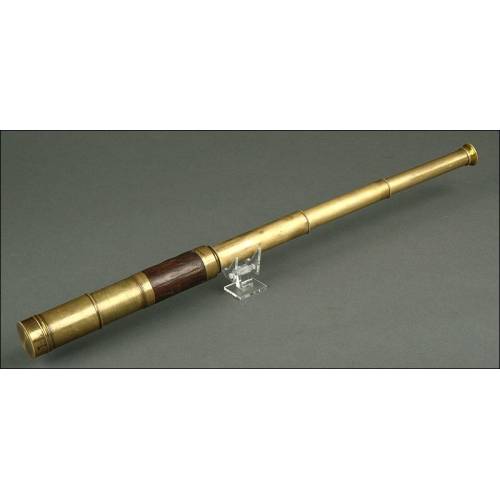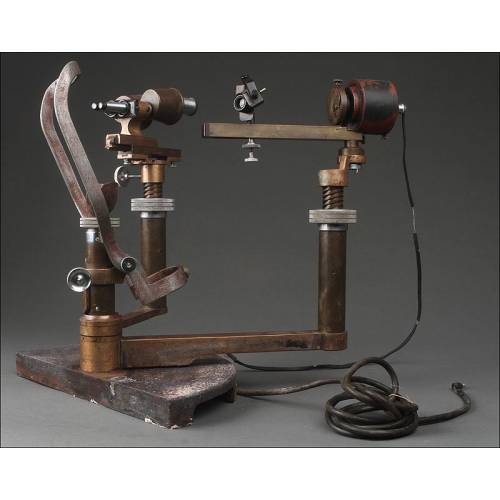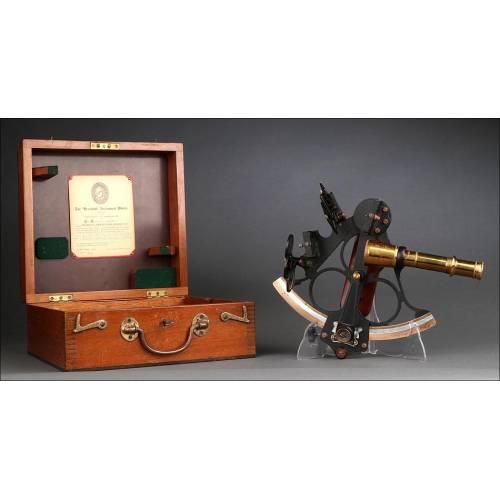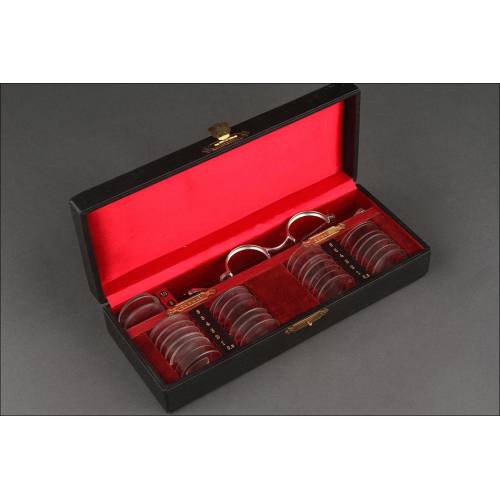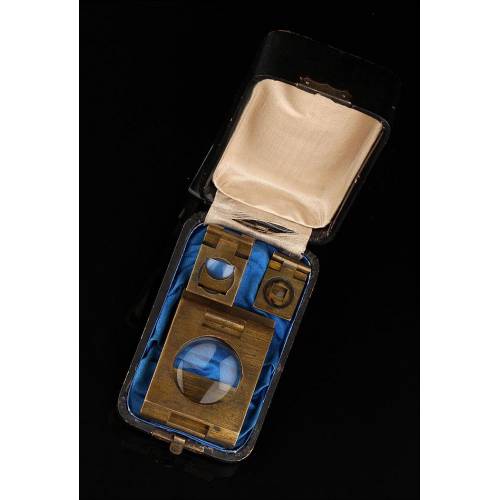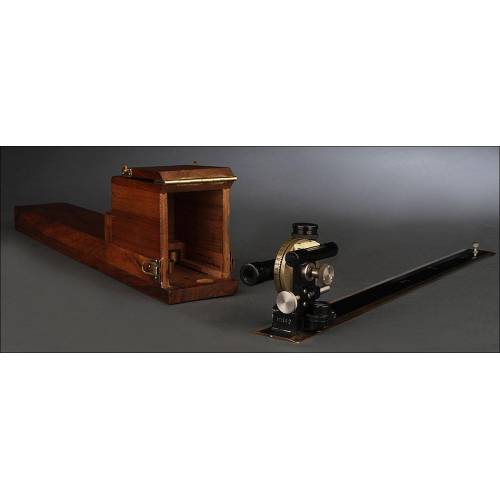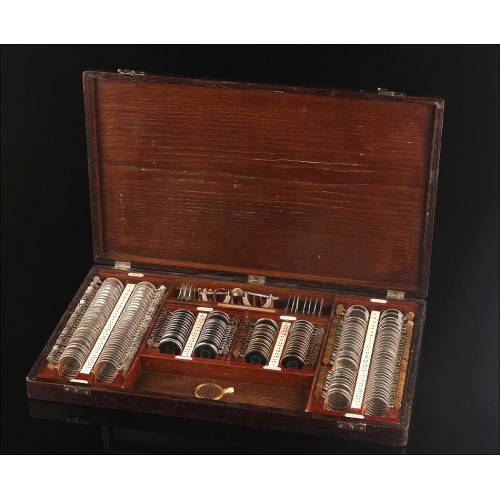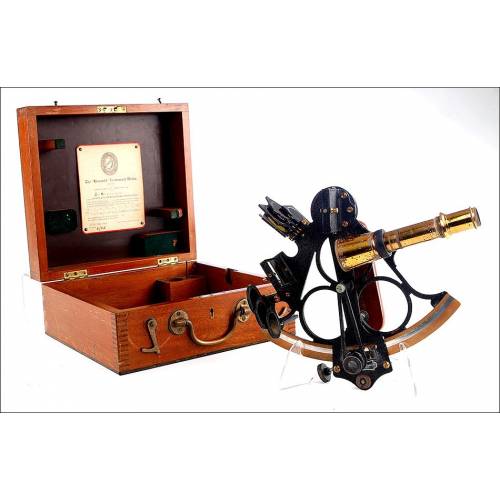C-352
Antique Simmance-Abady Mechanical Flicker Photometer. England, 1910
Rare antique Simmance-Abady flicker photometer. In excellent condition and working perfectly.
Sold!
Rare antique Simmance-Abady flicker photometer, mechanically operated and made in England in the early 20th century (1910). The photometer is in very good condition and works perfectly. This is one of the first photometers ever used in light research. Today, these items are considered real museum pieces; in fact, the London Science Museum has one in their collection. The instrument shows off a compact design composed of a solid mahogany wooden box that hides the mechanism. As well as being an antique and functional item, its fine design turns it into a very decorative piece too. Flicker photometers were used to compare the luminosity or brightness of two different sources of light. They are scientific research instruments whose operation is based on a physical principle. This principle states that when two flickering sources of light have the same luminosity, the flickering disappears. To operate the photometer, one source of light must enter through one of the side windows and fall on a white plate. The other source will enter through the opposite window and fall on the second plate. The user must look through the eyepiece and rotate the device to generate the flickering. If the light sources have the same luminosity, the flickering will disappear. This gorgeous instrument preserves its original solid mahogany wooden box in really good condition. The wood looks fine, with a lovely satin finish and the great appearance provided by its dark reddish color. The four pieces that make up the box are connected by tongue-and-groove joints, beautiful and sturdy. The box is connected to a series of adjustable component parts, the angle gauge and the brass eyepiece standing out from the rest. The gauge bears the brand name SIMMANCE-ABADY and the devices name, FLICKER PHOTOMETER, in clear white lettering. For its scientific interest and fine design, this awesome antique Simmance-Abady flicker photometer will shine in any collection. Measurements: Width: 7.5 in / 19 cm. Height: 7.87 in / 20 cm.

